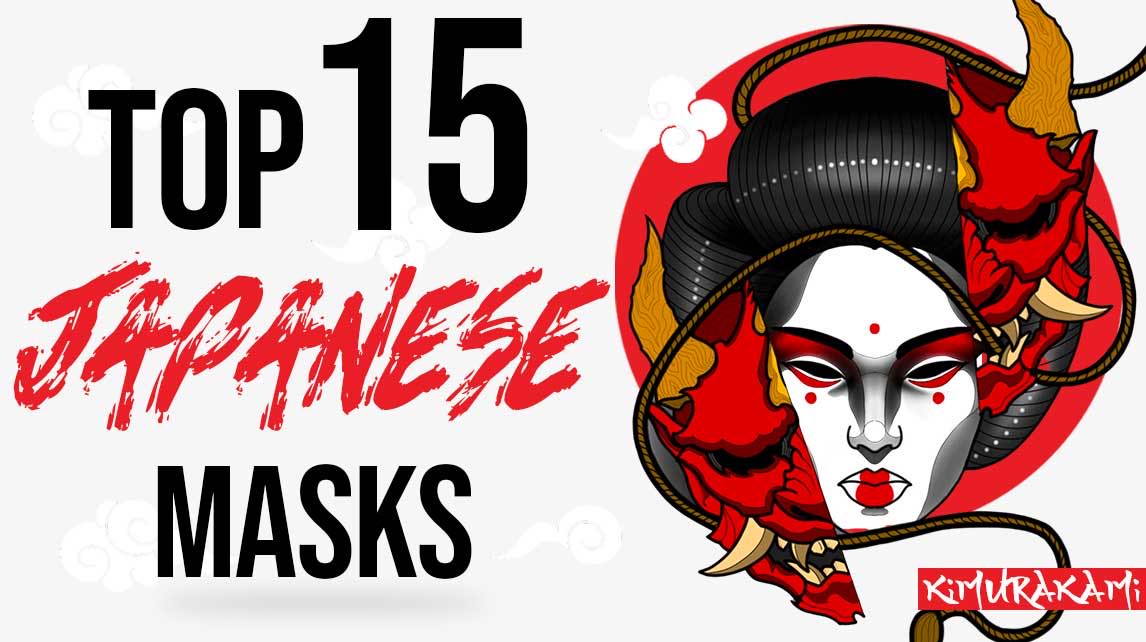Japanese mythology lists a good number of myths and legends, which are the pride of the archipelago. Among them, do you know the goddess Amaterasu?
Amaterasu is the sun goddess and ancestor of the imperial family, belonging to the Shinto pantheon of Japan. She is the deity with the most Japanese worshippers, as she represents the light that warms and brings happiness. She plunged Japan into darkness after having a dispute with her brother Susano.
The cult of the goddess Amaterasu is the most important in the archipelago. She represents the country of the rising sun by this red disc, which is enthroned in the center of the Japanese flag.
The goddess Amaterasu is the most important Japanese god in the archipelago.
This magnificence has a cult comparable to the Japanese gods of creation. In this article, you will have more details about:
- Shintoism, the main religion of Japanese folklore
- Amaterasu, the mythical figure of the land of the rising sun
- The link between the imperial family and the goddess Amaterasu
- The various places of worship for the sun goddess
- The representation of the Shinto sun deity, in popular culture
How about we start right away by tackling the topic of Shintoism? The ancestral religion of the Japanese people. Come on, let's get started!
Shintoism, the main religion of Japanese folklore
 Amaterasu and the cave
Amaterasu and the cave
Shintoism or Shinto is an ancestral, polytheistic religion with animistic beliefs in the Japanese archipelago. Indeed, its main objective is to praise the Kami (deities or spirits of nature) through rituals. It is the oldest religion in Japan, still practiced, even if its polytheistic side tends to disappear.
This religion deifies an almost infinite number of Japanese deities, both celestial and still earthly. The Kojiki (chronicle of ancient facts) written in 712, represents a fundamental basis for this Japanese dogma. According to its mythical accounts, the Nipponese archipelago is the result of the union of a celestial couple, the god Izanagi and the goddess Izanami.
Amaterasu is the Shinto goddess of the sun and the ancestor of the imperial family. This ancestral relationship allows the emperors, to take over the religion, thus advocating state Shinto which rejects Buddhism. Shintoism promotes harmony between human beings and the Kami, or forces of nature.
Amaterasu, the mythical figure of the land of the rising sun
According to the Kojiki, the goddess of the sun is referred to as Ōkami, meaning "great goddess." In the Nihon Shoki, she is referred to as Amaterasu-sume-ōkami, meaning "great imperial goddess who illuminates the sky". The Nihon Shoki (chronicle of Japan) ends in 720, having been written by Prince Toneri and other historians.
In addition, Amaterasu is also known for proceeding to create the rice fields (inada). She teaches the mastery of weaving, through the breeding of silkworms. Finally, the myth states that she is said to have taught the cultivation of wheat.
Amaterasu and her handmaidens wove the fabric of the universe, as well as the clothes worn by the kamis. However, I want to mention to you that the versions differ according to the sources. Let us now turn to the history surrounding this national myth.
The birth of the sun goddess
According to the Kojiki,a divine couple, namely Izanagi and Izanami, was the origin of the Japanese archipelago. After that, Izanami continued to give birth to the other deities, all of them related to a natural element. Izanami lost his life after being burned in his genitals by his offspring, Kagutsuchi (fire deity).
Feeling lonely and helpless, the god Izanagi decided to go to Yomi, the realm of the dead. Unfortunately, he did not listen to the advice given to him by his beloved, and decided to look at her. He became frightened when he saw Izanami's rotting corpse, and fled from the realm of the dead never to return.
Izanagi went to the Tachibana River (present-day Miyazaki Prefecture) to perform water purification, after visiting hell. It is from this rite purification, that the goddess Amaterasu, as well as her brothers Tsukuyomi and Susanoo, will be born. Izanagi by rubbing his left eye and then his right eye, will give birth to Amaterasu and Tsukuyomi respectively and by rubbing the nose, Susanoo.
The fratricidal war between Amaterasu and Susanoo
 Illustration by Andrew Lester, retouching kimurakami.com
Illustration by Andrew Lester, retouching kimurakami.com
Amaterasu is the sun goddess, Tsukuyomi is the moon god, and Susanoo is the storm god. After the three deities were born, Izanagi assigned each one a key role. Amaterasu had been chosen to rule over the high celestial plains (Takamagahara), Tsukuyomi received the domain of the night.
Susanoo had received the world of the sea and oceans, which was not to his liking. He declared that joining his mother in the realm of the dead was better, than ruling over the waters. Izanagi, outraged, decided to banish his son from Takamagahara (which was the residence of the gods).
The disgruntled storm god was jealous of his sister's privileges and invited himself to the palace to stir up trouble. An unwanted individual, he would first kill a divine horse, then throw it near his sister in the middle of a ritual. He would also destroy the rice fields and temples of Amaterasu, each time attracting a violent storm.
The myth of the heavenly cave
Amaterasu exploded in anger because of Susanoo's actions but also, by the silence of the other deities. As a result, she decided to lock herself in a heavenly cave named Awano-Iwato and seal the entrance with a stone door. Amaterasu's isolation caused the sun to disappear, engendering the world's fall into darkness.
Without light, the world sinks into anarchy, causing the other kami to gather around a river (Awano-yagasuwara). Omoikane (god of cunning), proposes to the divine assembly, a banquet near the cave in order to bring out Amaterasu. Ishikoridome (god of mirrors), was to make a mirror, the Yata no Kagami, to face the cave.
The divine banquet was thus organized to attract the curiosity and jealousy of the goddess Amaterasu. During it, Uzume (goddess of mirth) performed a sensual dance to entertain the kamis, which brought cheers. With so much festive commotion, the curiosity of the sun goddess was aroused, and she asked them why they were so joyful.
Amaterasu, the deity with the greatest importance
 Art creation by Elisa rio
Art creation by Elisa rio
Uzume, who was still singing and dancing, replied to Amaterasu, that they had found a divinity even more beautiful than her. Amaterasu was so shocked but also jealous, that she decided to go out to see her replacement. The goddess of gaiety was right, the "said" replacement was truly sparkling...
Tardily, Amaterasu realized the deception of the gods by seeing her own reflection in Ishikori's divine mirror. With Amaterasu captivated by herself, Tajikarao (god of strength) took advantage of this moment to lift and throw the door. To prevent her from returning to the cave, the other deities used a sacred rope to seal the entrance.
With the light back in the world, Amaterasu agreed to join the divine assembly, provided that Susanoo was punished. His beard was cut off, his fingernails and toenails were torn off, and he was expelled from heaven. Susanoo after killing the monster that plagues the earth, retrieved the sword Kusanagi-no-tsurugi to give to his sister.
The connection between the imperial family and the goddess Amaterasu
In the Nihon Shoki, the goddess Amaterasu is still referred to as the "Great Imperial Goddess who illuminates the sky." This appellation is used to show the familial relationship between the emperors and Amaterasu. The Kojiki also states that Amaterasu's heirs descended to earth in order to rule Japan.
Origin of the imperial family
 Image made by Moninaplu
Image made by Moninaplu
After the expulsion of the storm god to earth, Amaterasu decided to restore order to the Japanese islands. To do this, she sent her grandsonNinigi to earth so that he would make a pact with Okuninushi. This one was accompanied by celestial deities (Amatsukami), among which:
- Ame no koyane: this is the ancestor of the Fujiwara clan. Amaterasu is said to have entrusted him with the task of protecting the mirror of Yata within the imperial palace. His descendants are specialized in the coronation ritual
- Futodama: he is the ancestor of the Inbe clan . According to mythical accounts, he performed the divine ritual, and erected 500 sacred trees
- Uzume: this is the deity of cheerfulness and the ancestor of the Sarume clan (now extinct). She was an important piece in the divine ploy to get Amaterasu, out of the heavenly cave
- Ishikoridome: this is the deity of mirrors, and the creator of Yata no Kagami
A total of thirty-two kami accompanied Ninigi in his conquest, each accompanied by swords and shields. Ninigi as for him, possessed the sacred treasures of his grandmother, namely Kusanagi-no-Tsurugi, Yata-no-Kagami and Yasakani-no-Magatana.
In Japanese mythology, the descent of celestial deities into the world of men was renamed "Tenson Kōrin." After the request of the Amatsukami, Okuninushi handed over the governance of Japan to Ninigi, and then retired to the invisible world. Much later, Jinmu, the great-grandson of the goddess, became the first emperor of Japan and the heir to the sacred relics.
Imperial objects of Japan
 Visual creation of Rakuen: the Three Japanese Relics
Visual creation of Rakuen: the Three Japanese Relics
These legendary objects were given by the goddess Amaterasu to her grandson Ninigi. This one also would have passed on these same treasures to his son, Jinmu Tennō. The sacredness of the emperors and the foundation of Shintoism are symbolized by her treasures.
Since 690, to enthrone the successor of the emperor in the imperial house, the priests present them with these objects. This is a ritual that is carried out behind closed doors, as well as they are kept in chests. Only certain priests and the emperor, are allowed to see his objects.
The imperial insignia of Japan are three in number, and are as follows:
- The Kusanagi-no-tsurugi sword: this relic is kept in a shrine in Nagoya. Susanoo is said to have found this treasure inside the dragon Yamata no Orochi, after defeating it. He would then have offered the sword to his sister, in order to be forgiven
- The Yata-no-kagami mirror: this relic is kept in the shrine of Ise, in Mie prefecture. It was made by the mirror god Ishikodome, so that the goddess would be dazzled by her own beauty
- The Yasakani-no-magatama jewel: this relic is kept in the imperial palace, in Tokyo. It is assumed to have been made by Tamanooya
From the meiji era to World War II
From 1838 (meiji restoration) to 1945 (end of World War II), the emperor was considered a living god. Because he was of divine descent, Shōwa Tennō therefore proclaimed that Shinto worship was a matter of state. Thus, he established state Shintoism, and began the policy of expansion of Imperial Japan.
In December 1945, Allied Forces General Douglas Mac Arthur enacted a law that abolished state Shintoism. In 1946, Emperor Shōwa during his imperial address, asserts that he is not a god in human form. However, the latter does not renounce his divine ancestry.
The priestesses of the Ise Shrinewere chosen from among the imperial princesses who were not in wedlock. Indeed, Kazuko Takatsukasa, daughter of Emperor Shōwa, was elected high priestess. Today it is Sayako, the daughter of former emperor Akihito, who is.
The various places of worship for the Shinto goddess
These are the main places of worship, dedicated to the Shinto sun goddess. We distinguish two of them which are, the most important ones in the Japanese archipelago. If you like Japanese mythology and want to learn more about the Shinto cult, do not hesitate to visit.
 The Japanese shrine in Ise with monks in traditional white Japanese kimono dress
The Japanese shrine in Ise with monks in traditional white Japanese kimono dress
The Ise Jingu Shrine, the most important Shinto place of worship in the archipelago
This is a shrine located in Ise in mie prefecture, is a popular place of worship in the Shinto religion. The Nihon-Shoki explains that the goddess Amaterasu lived in this place, before she left to found the imperial family in Nara. The lower part called Geku, belongs to the goddess Toyōke (kami of housing).
The upper part of the temple, called the Naiku, belongs to the cult of Amaterasu . Part of the Naiku is strictly reserved for the imperial family and Shinto priests and priestesses. This is also the location of one of the three Japanese imperial emblems, the Yata-no-kagami mirror.
It has been considered the most beautiful shrine in the archipelago . Moreover, it should be known that this temple is rebuilt every 20 years, to symbolize purity. It was rebuilt for the 61st time, in 2013.
Amano Iwato-jinja Shrine, the cultural place of the heavenly cave
This is a religious site where the mythic cave where Amaterasu locks herself up to protect herself from her brother is found. It is located in Miyazaki prefecture. Approaching the cave is forbidden but on the other hand, you can see the Amano Yasukawara.
It is at this place, that the kamis created a sitting to bring Amaterasu out of the cave. Remember also, the door of this cave thrown by Tajikarao. It is the origin of the formation of Mount Tokagushi, in Nagano.
The representation of the Shinto sun goddess, in modern culture
 Itachi's Amaterasu technique in Naruto shinobi manga
Itachi's Amaterasu technique in Naruto shinobi manga
Amaterasu is among the greatest deities of the Japanese legend. She is a source of inspiration in popular culture. She can be found in manga, video games, cartoons, such as:
- In the manga and anime series Naruto: It is a cult and timeless manga from Japan, created by Masashi Kishimoto. It is largely inspired by the mythical stories of Japanese folklore, such as about the ninja, Japanese mythology, or sacred treasures. In this one, Amaterasu is a special eye technique, used by Itachi and Sasuke Uchiwa. Literally "celestial light", it is characterized by black flames that never go out, charring everything to infinity
- In the video game Okami: published by Capcom and released on PlayStation (Ps2 and Ps3), Amaterasu is portrayed as a white wolf named Shiranui. It is a playable character
- In the video games Shin megami tensei: on Persona 4, Amaterasu is the second persona of the main character Yukiko Amagi
- In the video game Aura Kingdom: Amaterasu makes an appearance there, as a familiar
- In the video game Warriors Orochi 2: it is also titled "the return of the demon lord". The main character Himiko, is the human reincarnation of Amaterasu
- In the science fiction series Stargate SG-1: Amaterasu is a lord of the Goa'uld system
- In the movie Onmyoji II: released in 2003, the revisited story of Amaterasu is played by Kyōko Fukada, one of the main characters
- In the manga Urusei Yatsura: it is a parody that interprets the myth of the heavenly cave, in which Amaterasu hides in order to escape from her brother
- In the manga Noragami: All the gods worship Amaterasu, because she is of paramount importance in their worlds. She is the supreme authority who rules the heavens
- In the Fate/Origins anime series: Amaterasu appears as an Avengers class servant . She transcribes the story of the sun goddess very well.
- In Inazuma Eleven GO: Amaterasu is presented as a warrior spirit made of flame
- In the famous game Final Fantasy: the Shinto goddess, is a level 3 elemental summoner
- In Marvel's Wolverine comic: Amaterasu is portrayed there as a member of an alien race
Amaterasu, Queen of the High Heavenly Plains
Amaterasu is the Shintoist goddess of the sun and queen of the Takamagahara in Japanese culture. According to the Kojiki, she was born from the left eye of her father Izanagi after he returned from the underworld. She was outraged by the behavior of her brother Susanoo, who allegedly destroyed her temples.
She hid in the heavenly cave, depriving Japan of its light and consequently generating chaos. Thanks to the deception of the Amatsukami, the Goddess came out of her cave never to return. Her brother was punished and to make amends, he offered the sword Kusanagi-no-tsurugi to his sister.
This weapon alongside the Mirror of Yata and the Magatama jewel, became the three imperial treasures of Japan. Indeed, Amaterasu is the queen mother of Japanese emperors, the very first of whom was Jinmu Tennō. Her veneration is at the Shinto shrine in Ise, which is rebuilt every 20 years as a token of purity.
Amaterasu is considered the most beautiful among the goddesses, and the most revered of the divine pantheon. Mythology doesn't just stop at the sun goddess, as there are other Japanese deities that you might like to know about. Let's discover this article together to cultivate our Japanese spirit!










Leave a comment